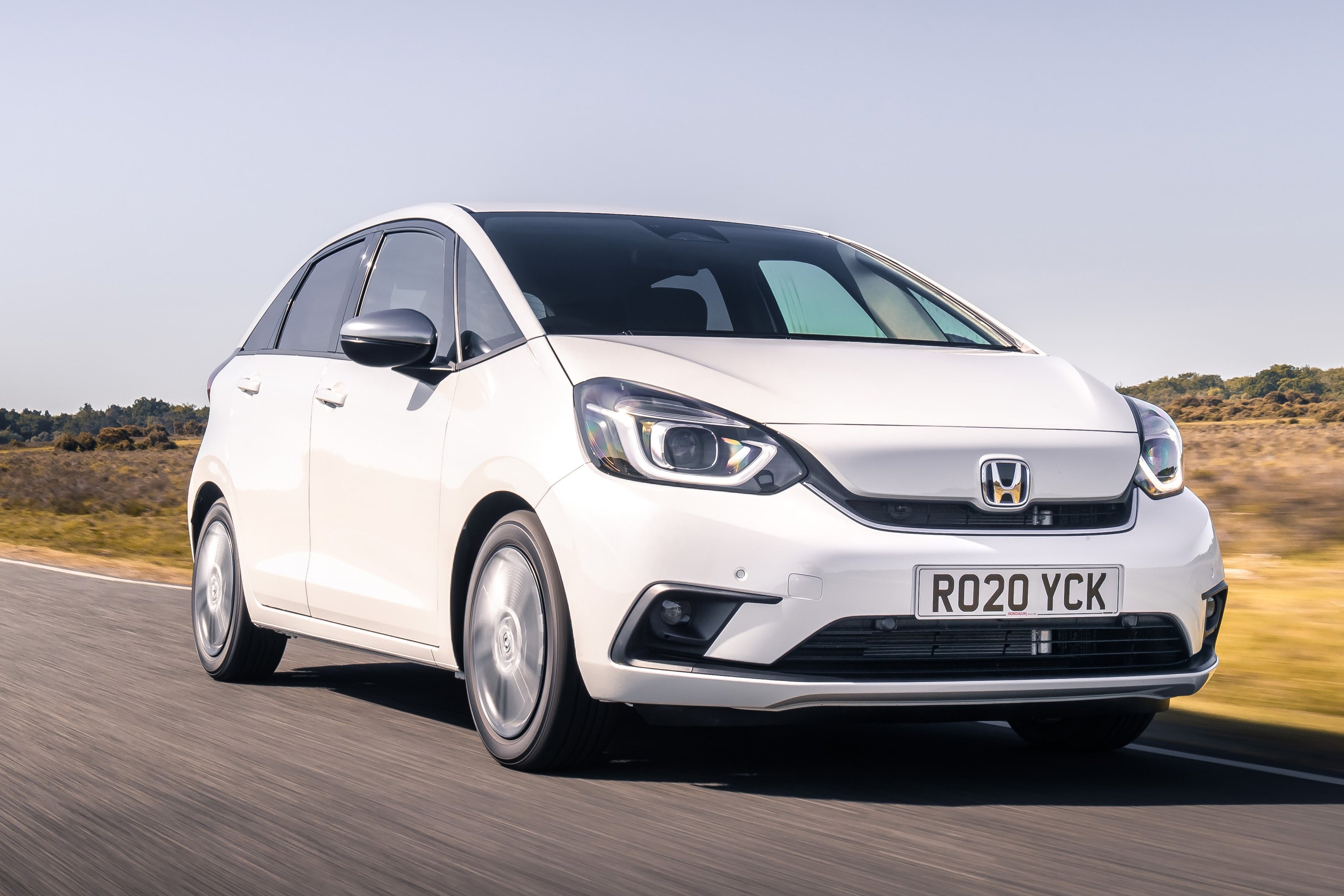Honda Jazz Review 2025: Price, specs & boot space
Written by Andrew Brady
Quick overview
Pros
- Extremely versatile with big boot and ‘Magic Seats’
- Hybrid setup means it’s relaxing to drive and ultra efficient
- Trendier than you’d expect
Cons
- Pricey compared to mainstream alternatives
- Firm ride with 16-inch alloy wheels
- Fuddy-duddy image won’t appeal to everyone
Overall verdict on the Honda Jazz
"No one ever regretted buying a Honda Jazz. It’s the sort of car that’ll continue to surprise you with its practicality, reliability and frugal fuel economy. The latest model is more appealing than ever, thanks to a modern cabin and clever hybrid engine setup."
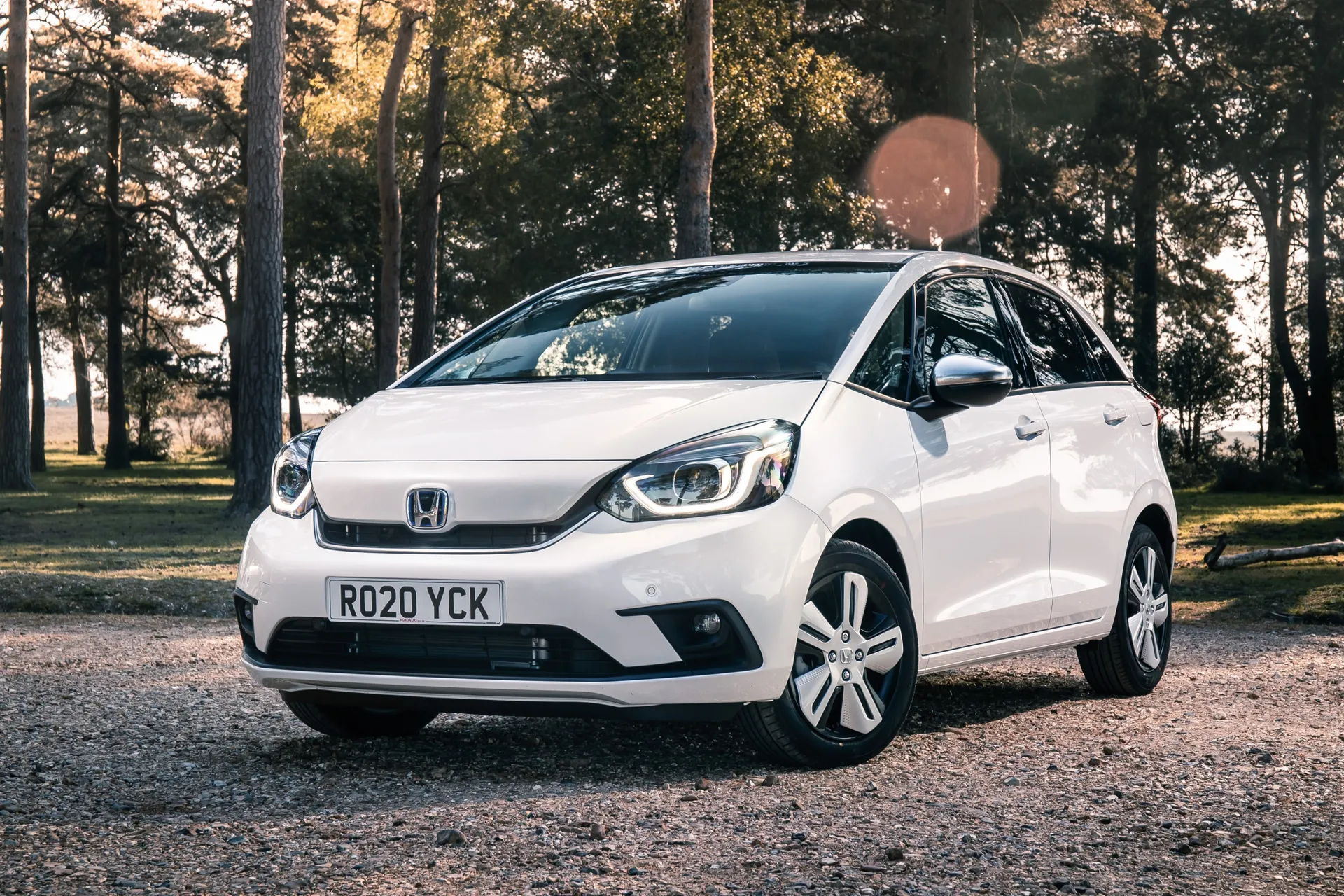
The Honda Jazz has always been popular with buyers looking for a small car with big car versatility. It’s earned itself a strong following over the years, with owners praising its incredible practicality, low running costs and reputation for dependability. We'll explore all of this in this Honda Jazz review.
The latest Honda Jazz is trendier and more tech-packed than ever - yet it’s retained many of the features which its loyal buyers have come to love. It’s easier than ever to drive, with a comfortable (higher than normal) driving position, while its hybrid engine means it’s incredibly efficient.
In true Honda Jazz form, the latest model is infinitely more practical than conventional small cars like the SEAT Ibiza or ever popular Volkswagen Polo, or for used buyers there's the Ford Fiesta. There’s a huge amount of headroom and fully-grown adults ought to be very happy sitting in the back - not least because someone else is doing the driving. The rear bench can flip and fold to provide people-carrier levels of practicality, while there’s plenty of storage space for your odds and ends.
The new Honda Jazz combines a 1.5-litre petrol engine with not one but two electric motors and a single-speed gearbox. It drives just like an automatic petrol car, albeit one that can set off in silence. It’s not a plug-in hybrid, so you don’t have to faff around charging the Jazz, yet fuel economy should be very good. Officially it can return up to 62.8mpg depending on which version you pick - the Crosstar manages 58.9mpg, while the Jazz Advance delivers a combined 61.4mpg.
With excellent visibility and an impressive turning circle, the Jazz is in its element around town. It can dart in and out of spaces, while parking is easy thanks to sensors across the range, and a reversing camera on all models, too.
The Honda Jazz is also surprisingly refined on the motorway, meaning you can travel hundreds of miles in comfort. That ‘big car’ feel means you’re well insulated from the outside environment, which is a good thing at 70mph.
Surprisingly, for a car that focuses on comfort and practicality, the Jazz does feel rather firm over less-than-ideal roads. You’ll find yourself flinching if you hit a pothole at speed. All of the current range come on 16-inch alloy wheels, do you don't have any room to manoeuvre here, either.
While the Honda Jazz is well-equipped (provided you avoid the cheapest Honda Jazz SE when buying used) and ticks many boxes, you’ll pay more for one compared to a regular little hatchback. Prices start in the region at almost £27,000, which will get you a pretty high-spec VW Polo.
If you want the more 'SUV' version (and we use that in the loosest sense), you'll want our Honda Jazz Crosstar review.
Looking for a used car for sale? We've got 100s of Honda Approved Used Cars for Sale for you to choose from, including a wide range of Honda Jazz cars for sale. If you're looking for the older version, you need our Honda Jazz (2015-2020) review.
Is the Honda Jazz right for you?
Do you want a small car that’s still capable of carrying many people and things? Do you fancy a hybrid engine that’ll provide frugal economy? Do you want a car that’ll be cheap to run in other ways, too, with a reputation for reliability? If so, yes, the Honda Jazz probably is the right car for you.
It’s not perfect (that harsh ride and high price tag), but it’s a really easy choice to justify - especially if you need a big boot or wish to carry people in the back. Traditionally the Jazz has always appealed to an older clientele, but it ticks the boxes for a wide variety of buyers - thanks to fresh new technology (the media system is leagues ahead of the old one) and trendy looks.
What other cars are similar to the Honda Jazz?
There’s nothing else quite like the Honda Jazz. It sits between conventional small hatchbacks - cars like the Ford Fiesta, Vauxhall Corsa and the reliable Toyota Yaris plus more practical small SUVs like the Nissan Juke. You might consider the Volkswagen Polo for something with similar ingrained quality.
We'd also include cars like the Skoda Kamiq but in size it's probably most similar to the now discontinued Nissan Note.
What's the Honda Jazz like to live with?
We've spent three months with the Honda Jazz to find out what it's like to live with every day. We actually tested two different models in that time: a Honda Jazz EX and a Honda Jazz EX Style. Both were everything you'd expect in a Jazz: cheap to run, surprisingly versatile and generally easy to live with.
Any surprises or complaints? Not really. Both cars were entirely dependable during our time with them, while the flip-up magic seats proved to be a particular high point for our practicality-obsessed tester. Although the Jazz is a small hatchback (similar in dimensions to a Ford Fiesta), we were surprised by how well it coped well with long motorway journeys. It certainly doesn't struggle out of town, while the hybrid engine is consistently economical.
Comfort and design: Honda Jazz interior
"The Honda Jazz interior uses features from the modern Honda E electric car to make it feel ultra-contemporary. A large windscreen lets in lots of light, while the sleek, fabric-covered dashboard is a classy touch. Throw in a retro twin-spoke steering wheel, and the Jazz’s cabin looks considerably more fashionable than its dated predecessor."
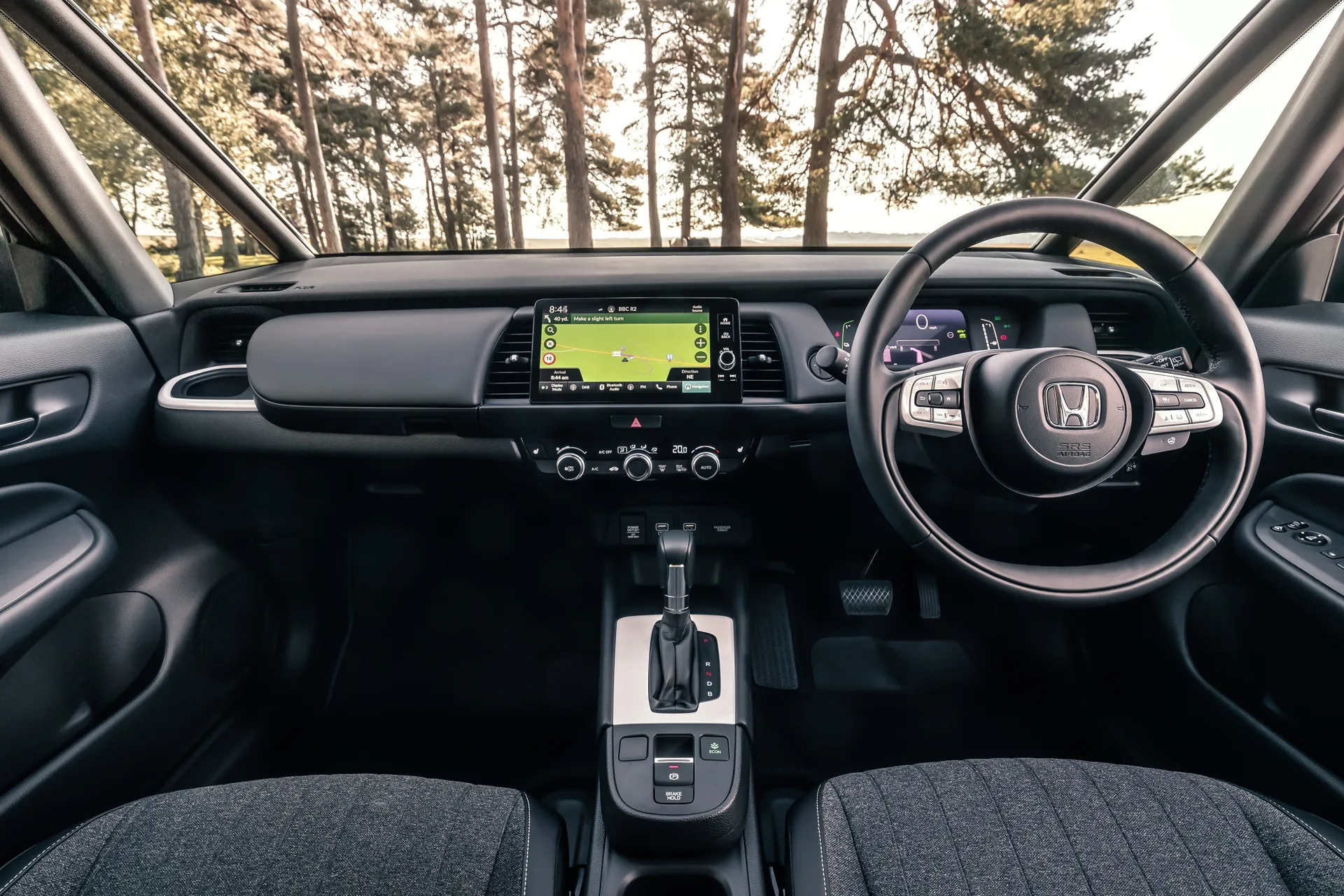
The Honda Jazz is comfortable, too. The seats are wider and more cushioned than before, while the synthetic leather upholstery fitted to new models looks particularly smart. Unfortunately, there’s no adjustable lumbar support, but we've found the seats to be pretty supportive after several hours in the car.
All models get a digital instrument cluster instead of normal, analogue dials. You can’t modify this like in posher models but it still looks pretty modern. There’s a lot of information on there - from the current speed to the temperature, mileage, time, speed of the cruise control, average fuel consumption… you get the idea. It looks a bit overwhelming at first, but your current speed is displayed in a usefully big font.
Quality and finish
As well as being considerably more stylish than before, the Honda Jazz’s cabin feels better built, too. We wouldn’t go as far as describing it as premium, but it’s certainly more than acceptable for a car of this size and price.
A swath of fabric across the dash is a homely touch, although it’s clear that it’s hiding what would otherwise be a huge chunk of dark, shiny plastic. Start feeling around the top or the bottom of the dash and it’s anything but soft-touch.
There are a few other tell-tale signs that you’re sitting in a Honda rather than a Volkswagen. The shiny silver switches for things like the volume control and climate control might look swish, but they feel a bit naff to use. Little effort has been made to jazz up the staid plastics around the electric window buttons on the door cards, either.
It’s generally a very well-finished cabin, although it is spec-dependent. Used buyers will need to look for a Honda Jazz SR for soft leather interior panels and the smart black fabric/leather upholstery, while only top-spec Jazz EX models come with a leather-wrapped steering wheel and gear selector. Without these features, the basic Honda Jazz SE feels a bit drab. New buyers get a bit more included as standard with the base Elegance model, which is just as well given its steep price.
Infotainment: Touchscreen, USB, nav and stereo in the Honda Jazz
While the entry-level Honda Jazz initially made do with a small 5-inch audio system with DAB radio and just the four speakers, the whole range now comes with a slick 9-inch display. Designed to be operated like a smartphone, with a tiled home screen and customisable shortcuts, it’s night-and-day better than the dated media system used in the old Jazz.
Our main gripe with the infotainment screen is its position on the dash. It’s angled slightly upwards and not in the direction of the driver, meaning it can often reflect sunlight and make it difficult to read.
Still, the graphics are sharp and it’s quick to respond while, unlike a lot of modern cars, you don’t have to use the touchscreen to operate everything from the climate control temperature to the radio station. There are physical dials below the media system for the air conditioning, while buttons allow you to easily skip tracks, adjust the volume and skip to the home screen on the infotainment screen.
Of course, you’ll still have to use the touchscreen for certain functions, like inputting addresses into the navigation or selecting a radio station. To help with this, Honda’s provided a useful finger rest below the screen. There’s a voice recognition system on hand, too. This virtual assistant can perform a wide variety of tasks, from answering questions about the car to searching for navigation destinations.
Talking of navigation - that was only available on top-spec Honda Jazz EX models. This isn’t a big deal, though, as Apple CarPlay and Android Auto are standard on mid-range SR trim. These are great for mirroring apps like Google Maps from your phone onto the car’s media system. In-car wifi is available, too, so you won’t have to worry about running out of data. With new Jazz models, Honda replaces navigation with Alpine/HERE map data. Or you could just use your phone.
Space and practicality: Honda Jazz boot space
At 4044mm long, the Honda Jazz is only a cigarette paper longer than a Ford Fiesta. It's 1694mm wide and 1526mm high, while its 2517mm wheelbase means there's more room inside than alternatives.
Indeed, practicality has always been one of the Jazz’s selling points over more conventional rivals. When the latest model was in development, Honda says its designers were briefed that practicality simply couldn’t be affected by the hybrid setup, even though they had a combustion engine, two electric motors, batteries and a fuel tank to contend with.
No one’s going to have any issues with the amount of space in the front of the Jazz. There’s a huge amount of headroom, while the driver’s seat across all models adjusts for height. The seating position is on the high side (even in its lowest settings), but that gives you a good view of the road ahead and makes getting in and out of the car easy.
There’s enough adjustment in the steering wheel for most Jazz buyers to find a comfortable driving position, too.
In terms of storage up front, there’s a useful cubby box under the central armrest, while there’s space in front of the gear lever to rest your phone. The door bins - while not massive - can take a small bottle of water and a few other odds and ends. If you’re a fan of a grande latte, you might be disappointed as the cup holders aren’t particularly big. There are four of them, though - two between the front seats and two in the dash.
If you’re planning to regularly carry passengers in the back, something like a Polo simply doesn’t compare. The Jazz’s relatively boxy shape means there’s a huge amount of headroom for rear-seat passengers, and six-foot adults can fit comfortably behind six-foot adults in the front. The one small caveat is that you shouldn’t expect to carry a third person in the middle seat - it’s too narrow for anything but occasional use, by a child. Talking of which - there are ISOFIX points on the outer seats, helping you fit child seats.
With the rear seats in use, the boot is a decent size if not a huge amount bigger than rivals. Officially, it can swallow up to 304-litres of luggage, while it’s a fairly practical shape. Access is easy, with only a small lip, and there’s a useful cubby under the floor for hiding away anything you may wish to hide.
Like its predecessors, the Jazz has a party piece in the form of its Magic Seats. Essentially, the rear bench can flip and fold to provide up to 1205-litres of luggage space. Doing so is child’s play, and it’s genuinely incredible what you can fit in the back of the Jazz - from a mountain bike to plants from the garden centre (and you can keep them upright). Maybe we’re just easily impressed.
Handling and ride quality: What is the Honda Jazz like to drive?
"The Honda Jazz is a really easy car to drive around town. The steering is usefully light, while a surprisingly tight turning circle means you can change direction without too many awkward shuffles of the steering wheel."
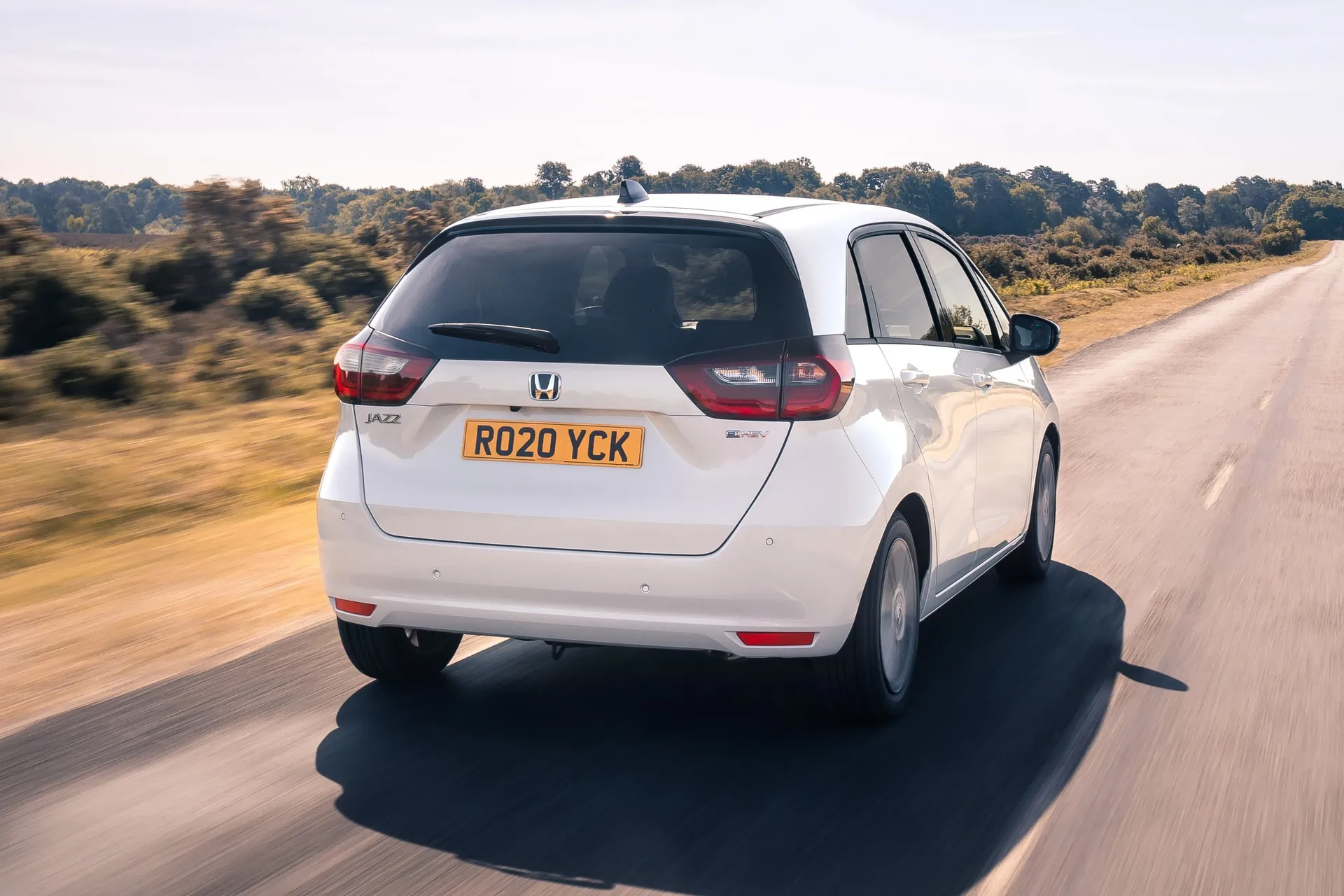
Visibility is excellent in the Honda Jazz, thanks to a slightly higher than normal seating position and a huge front windscreen with ultra-thin pillars. The sloping bonnet design makes it difficult to judge where the front of the car is, but that’s true for most modern small cars - and front parking sensors are standard on all new models, and all but entry-level Honda Jazz SE models when buying used.
Big door mirrors help with city driving, too, although it’s a shame that the Jazz doesn’t get the same clever digital rear-view camera as the Honda E electric car. Its relatively boxy shape and compact dimensions mean the Honda Jazz is quite an easy car to slot into parking spaces, helped too by the rear-view camera of Jazz EX used models. Every Jazz trim except the Elegance has this camera when looking to buy a new car.
Out of town, the Honda Jazz does a commendable job of feeling like a much bigger, grown-up car. It’s not as fun to drive as a Ford Fiesta down a winding road, but it feels safe and assured, without leaning too much in bends.
It’s a shame, however, that the Honda Jazz rides so harshly on bumpy roads. Hit a pothole and you’ll notice a severe ‘thwack’ as it shudders through the cabin, and your passengers will complain if you don’t slow down to near-walking pace for potholes.
You might find that used models fitted with 15-inch wheels are slightly more compliant than those we’ve driven with the bigger 16-inch alloys. Don’t go thinking the rugged Honda Crosstar model is any more comfortable in this regard, either.
What engines and gearboxes are available in the Honda Jazz?
The Honda Jazz is only sold with one engine and gearbox in the UK. This is a hybrid setup, comprising of a 1.5-litre petrol engine combined with two electric motors and a compact lithium-ion battery pack.
The Jazz’s total power output of 107PS might not sound a lot, but its hybrid system - including a single fixed-gear ratio gearbox - means it actually feels pretty eager. It can accelerate to 62mph in as little as 9.4 seconds, which is comparable to a mid-range Ford Fiesta EcoBoost.
Under normal driving, the Honda Jazz will run in Hybrid Drive mode, using both petrol and electric power to provide the best combination of performance and efficiency. At high speed, it’ll resort to Engine Drive, saving electricity for when it’ll be best utilised - such as around town. During low-speed driving, the petrol engine can cut out entirely, allowing the car to run under electric power.
It’s all quite complicated stuff but it suits the car very well and it won’t take long for you to get used to how it works. As there are no gears to worry about and acceleration is pretty much instantaneous, the Honda Jazz is a very easy and relaxing car to drive and one of the best hybrid cars going.
Refinement and noise levels
Pleasingly, the hybrid system is so good at what it does that you’ll struggle to distinguish which mode it’s in. Listen carefully and there’s a slight thrum as the petrol engine kicks in but, with the radio on, you’re not going to notice it. When the petrol’s running, it’s considerably quieter than three-cylinder alternatives.
The engine and motor combination also makes stop-start traffic a relaxed affair. Most modern petrol cars will turn the engine off when you come to a complete halt, but the hybrid Honda Jazz will do this before you come to a stop - relying on electric power to keep things like the lights, radio and power steering working. It can set off in electric mode, too, meaning you don’t have to wait for the engine to start up - helping refinement levels.
There’s a fair amount of road noise, not helped by the firm suspension and 16-inch alloy wheels. Wind noise is pretty well hushed, though, especially considering the Honda Jazz’s fairly upright shape. Indeed, it feels a very relaxed motorway car with the cruise control set at 70mph.
The single-speed transmission does make a bit of din if you floor the throttle. Under normal driving, though, this isn’t really necessary and you’ll soon learn to avoid doing that apart from the occasional overtake or on the shortest of motorway sliproads.
Safety equipment: How safe is the Honda Jazz?
All Honda Jazz models use a wide-view front camera to monitor the road ahead. This enables features like the Collision Mitigation Braking System, which can notify the driver and even apply the brakes to prevent a collision (or at least reduce the impact). Honda claims that it goes further than more rudimentary systems, able to spot pedestrians in the road at night or identify an oncoming vehicle during turning.
Further clever features designed to prevent a crash include the Road Departure Mitigation System, which will nudge the steering if it looks like you’re about to venture off the road. There’s also automatic high-beam headlights, adaptive cruise control and an intelligent speed limiter, which can adjust the top speed of your car depending on the current speed limit.
If you are involved in an accident, the Honda Jazz is a very safe car to be in. It uses more high-strength steel compared to the previous model, while no fewer than 10 airbags will keep passengers cushioned in a crash.
Unfortunately, there isn’t room for a spare wheel in the Jazz. All models make do with a tyre inflation kit.
Euro NCAP awarded the Honda Jazz a five-star safety rating when it was crash-tested in 2020.
MPG and fuel costs: What does a Honda Jazz cost to run?
"Officially the Honda Jazz returns up to 62.8mpg. The most impressive thing about this is, in our experience, that should be fairly achievable."
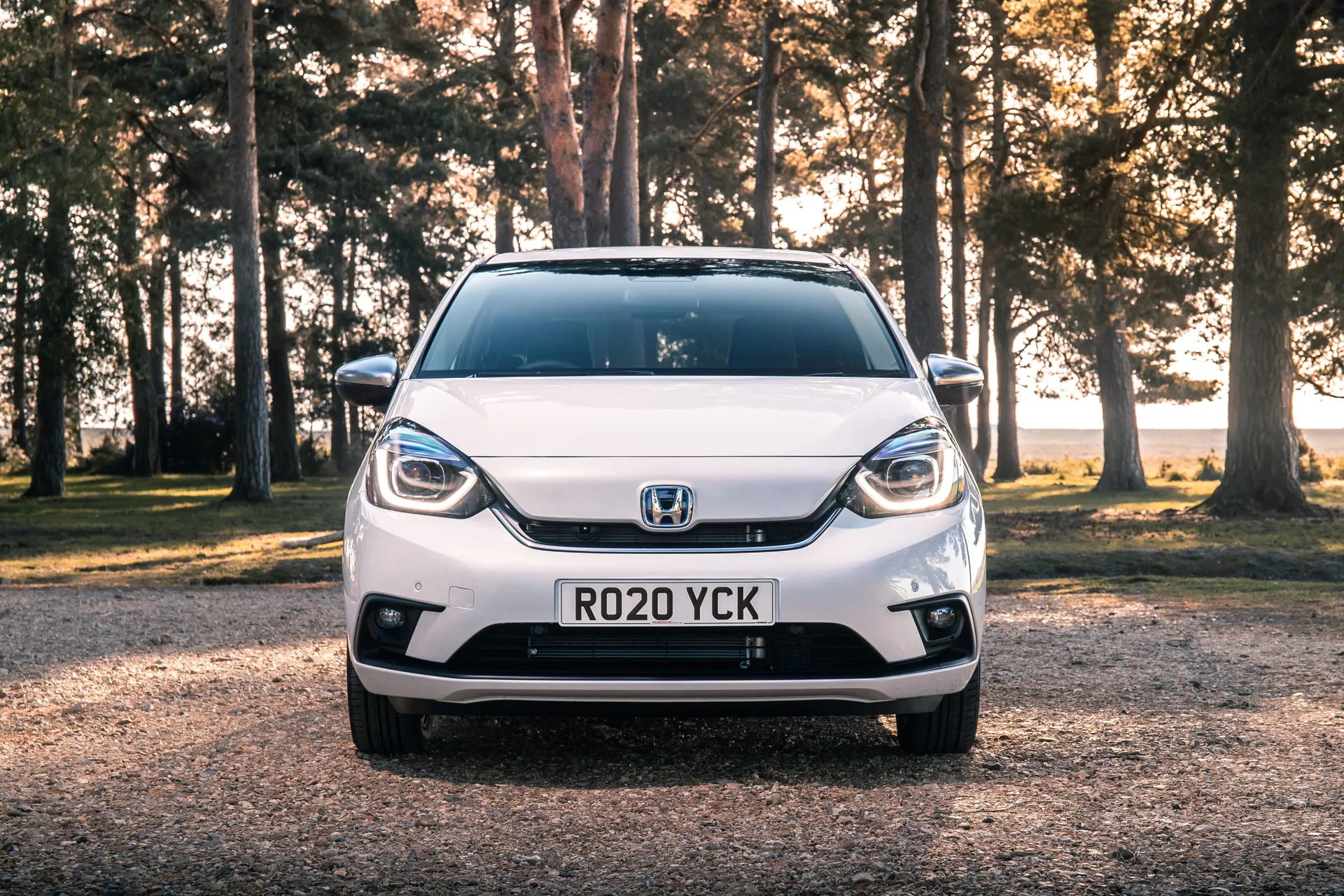
During our time in the Honda Jazz, we saw early-60s MPG with little in the way of effort. Rivals with small-capacity turbocharged engines might be similarly efficient on paper, but tend to be a lot thirstier in the real world. In Advance trim, the official figure dips slightly to 61.4mpg, but you won't notice this in real-world driving.
With a 40-litre fuel tank, you shouldn’t spend too much to fill the Jazz entirely. With some gentle driving, you might be able to get 450 miles out of a tank.
How reliable is a Honda Jazz?
If you're looking for a reliable used car, you could do a lot worse than buying a Honda Jazz. Over four generations, it's earnt itself a reputation as a totally dependable little car.
While the latest model is too new for any real reliability data, we don't foresee any issues on the horizon. Honda scored an impressive 89.7 and came 11th out of 29 in the most recent HonestJohn.co.uk Satisfaction Index.
Insurance groups and costs
Honda Jazz insurance groups with new cars begin at group 21 for the Elegance and 22 for the Advance. With earlier versions, this drops to as low as group 18 for the EX Style model.
VED car tax: What is the annual road tax on a Honda Jazz?
As the Honda Jazz is now a hybrid, it qualifies for a £10-a-year discount on its car tax. Don't expect VED rates from 10 years ago, though – you'll pay £180 a year in road tax (including discount), which is equal to other hybrids like the Toyota Yaris. First year rates run at £175, plus £10 off, for new buyers at the time of writing.
How much should you be paying for a used Honda Jazz?
"Look for the Honda Jazz as an ex-demonstrator or pre-registered model and you could pay around £27,500 for an Advance Sport, saving you £2000 on the list price."
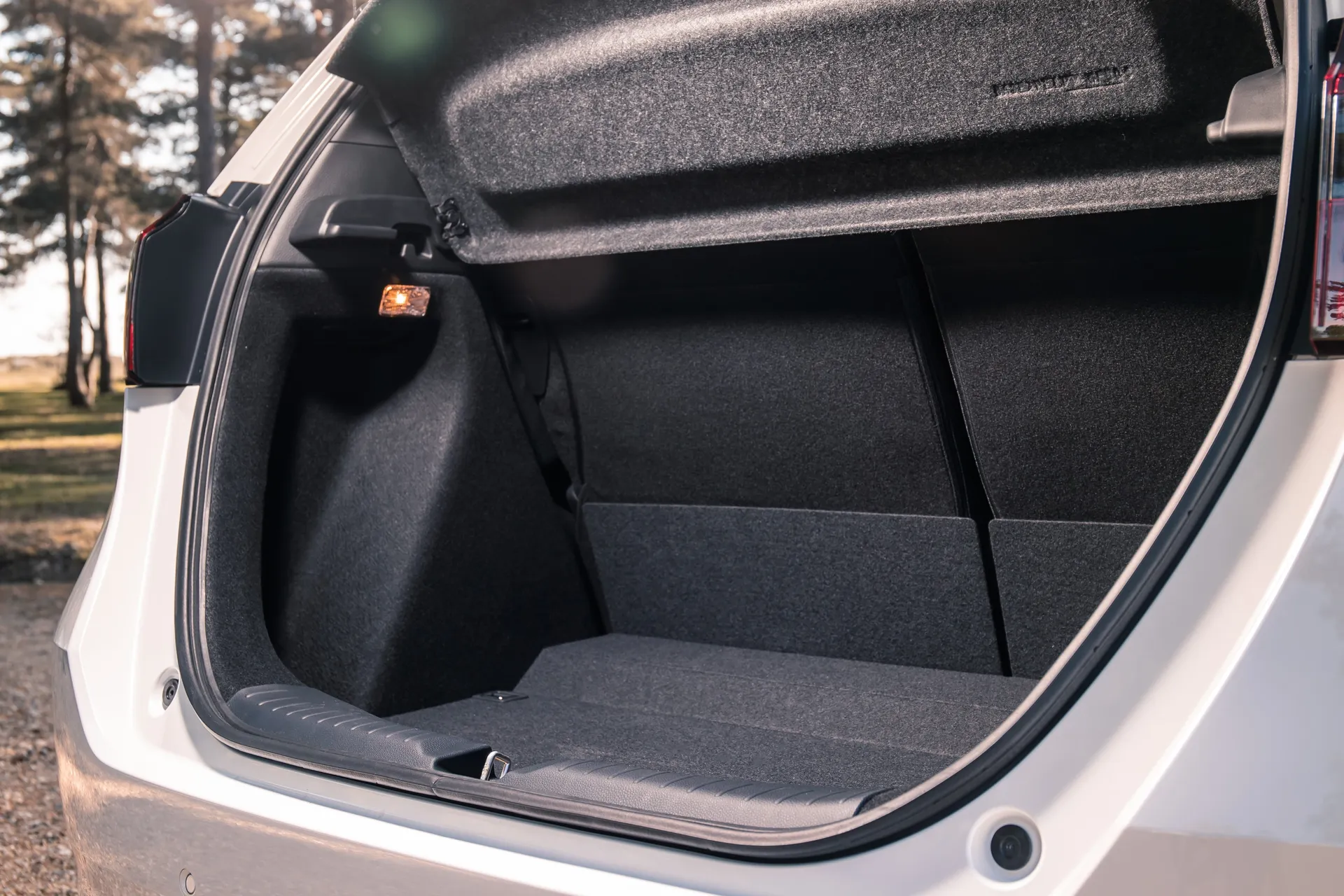
See out a four-year old example with less than 20,000 miles on the clock in simple SE trim and you should pay around £15,000. The seems like keen value.
Trim levels and standard equipment
The most affordable model is the Honda Jazz SE, which is priced in the region of £19,000 when new. Standard kit includes 15-inch steel wheels, LED head and tail lights, DAB radio, an electric parking brake with hill-hold assist, air conditioning, front and rear electric windows, fabric seats and Honda’s Sensing safety tech.
Most buyers will be better looking for the mid-range Honda Jazz SR, which adds the slick nine-inch infotainment display with Apple CarPlay and Android Auto, front and rear parking sensors, 15-inch alloy wheels and part-leather upholstery. That’s quite a few nice-to-haves for not a considerable amount of extra cash - priced around £1200 over the SE when new.
Getting posh is the Jazz EX, which includes a rear-view camera, smart entry and start, heated front seats and steering wheel, blind-post information and Garmin navigation. The alloy wheels are upgraded to 16-inches.
On top of the EX is the Honda Jazz Crosstar EX, which we’ve covered in the separate Jazz Crosstar review but adds features like roof rails, a two-tone roof, a water-resistant fabric interior and a premium sound system.
Ask the heycar experts: common questions
Is the Honda Jazz a reliable car?
Is a Honda Jazz worth buying?
Which is better Honda Jazz or Suzuki Baleno?
What is the difference between the Honda Fit and Jazz?
Can I buy the Honda Jazz with a hybrid engine?
Get our latest advice, news and offers
Keep me updated by email with the latest advice, news and offers from heycar.
By submitting you agree to our privacy policy
